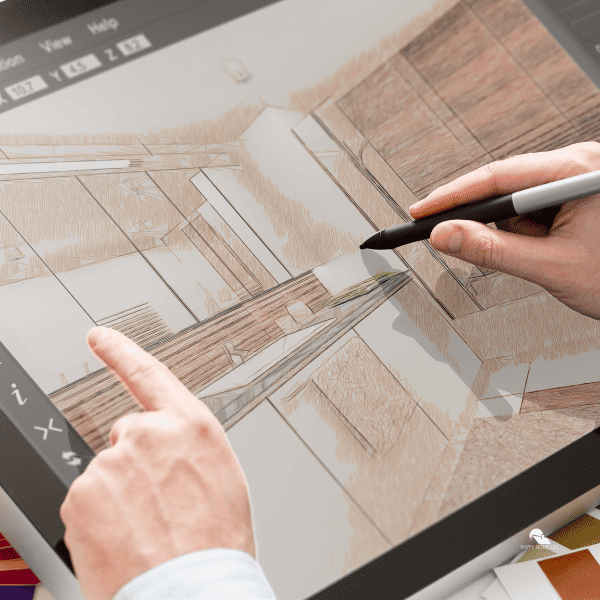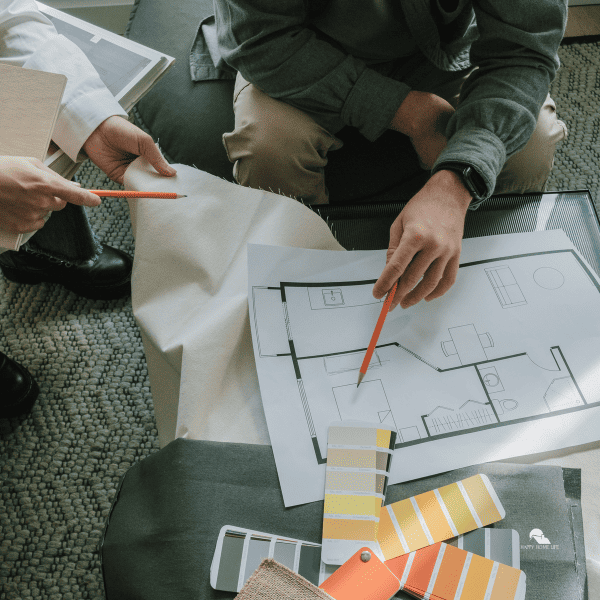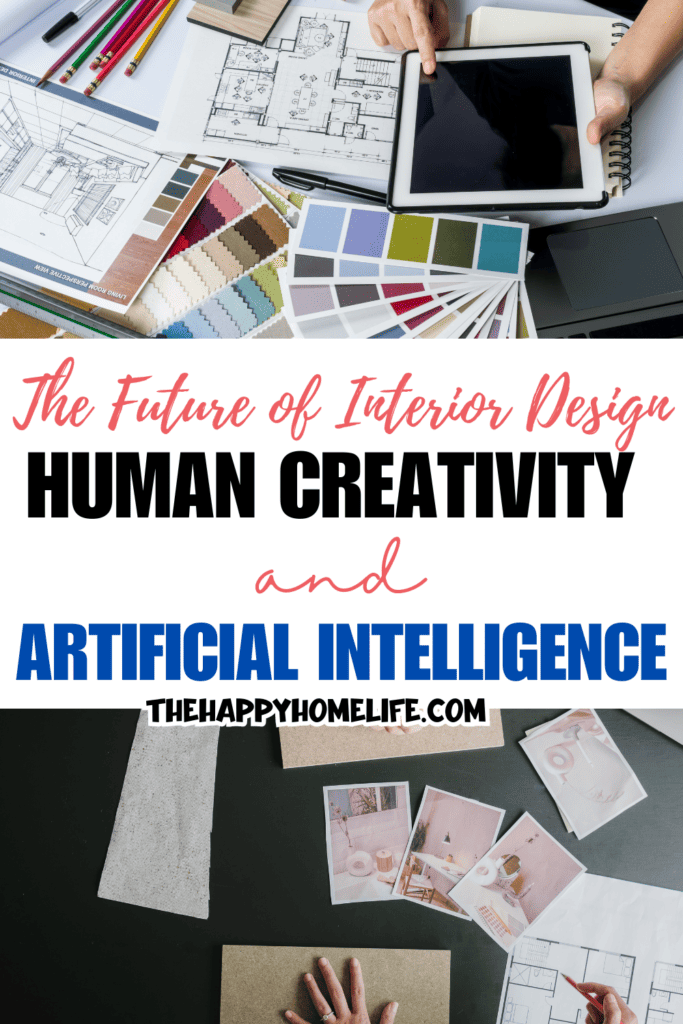Interior design is moving in an innovative direction due to the seamless amalgamation of human inventiveness and AI. However, as technology advances, it does not replace human creativity but rather enhances it and widens possibilities within the industry. This article will delve deeper into what lies ahead for interior design, wherein synergy between human designers and AI makes progress, productivity, and beauty a harmonious blend.
The combination of human creativity and computational power opens up new avenues for designing things. Designers can now test out various layouts, materials, or styles more quickly in order to identify the best approaches. Humans are freed up by AI from routine tasks, thus capable of concentrating on thinking up ideas.
It is evident that this partnership will change how we approach space planning as well as decorating schemes. Computation is managed by technology, while people deal with creative vision. These two entities will shatter the limits of interior design’s potential if brought together successfully.

The Evolution of Interior Design:
Throughout history, the art of interior decoration has reflected changes in culture, technology, and individual choices. From traditional to modern simplicity, decorative styles have changed along with fluctuations in societal norms and design thinking over time.
Thus, we are currently witnessing another technological aspect, which is the rise of AI, which enables designers to enhance their abilities by providing them with a wide range of tools necessary for their innovative process.
Designers have long been inspired by the spirit of each era and technological advancements while choosing between classical furniture and minimalistic pieces.
Today, there are innovative AI instruments that will help designers introduce their visions more efficiently and discover new opportunities. However, it is important to note that AI for home interiors is indicative of times changing, although people’s tastes may always differ from one another.
The Role of AI in Interior Design:
It is in this regard that the modern world has seen a significant role for AI in interior design. This technology is used to predict design trends and patterns. As a result, designers are able to keep up with current trends in their work. Furthermore, artificial intelligence (AI) enables interior designers to plan and optimize spaces. They consider elements like light and crowd movement, among other things, including what residents like.
Certain AI tools provide useful suggestions about materials and colors that match one another. It helps in saving time by looking at historical data or individual preferences on previous materials people had bought before coming up with such a decision faster than the average person can take himself, as it also reveals many other options for new material selection.
These days, there are many trends when it comes to materials; hence, design using artificial intelligence (AI) can help you personalize your space according to your taste and preferences, thus making the process an exciting experience.
Also, AI utilizes machine learning algorithms to give you personalized design ideas that suit your needs based on how you live as well as your style of preference, which is really helpful if you want something unique for yourself alone and are not exactly copying anything from anyone else.
Again, customization enhances the user experience and allows spaces to reflect his or her personality, as no two individuals would have the same view about life since these will differ due to their different backgrounds or roles they play within society, thereby leading to different kinds of lifestyles from each other, therefore requiring something special done only towards them but still drawing inspiration out others too while making sure nothing gets repeated twice here.
Hence, machine learning makes it possible through its ability to choose according to those provided inputs during setup until the individual receives the desired results simply because they become unique among everyone.
Additionally, customized homes are becoming increasingly popular as people seek ways to make their homes unique extensions of themselves rather than just generic houses where everything looks similar.
This has become more important now than ever before since many people want something unique that does not exist anywhere else in the world so that it can be said clearly here on earth when asked to live in a particular location.

Human Creativity as the Driving Force:
AI in the interior design world has several benefits, but its originality cannot be compared with that of human beings. Human beings have the ability to create spaces that are unique and that touch people’s hearts. AI is able to support these designers by taking over routine tasks and providing them with useful insights. This enables designers to concentrate their creativity more.
Design and Emotions:
- Interior design goes beyond aesthetics. It is about constructing places that provoke emotions and enhance comfort. Designers know moods. They recognize how a design can make a room feel different. AI is good at analyzing data but not at replicating the sympathetic, intuitive parts of human creativity.
Innovative Conceptualization:
- Novel design ideas often come from the intuition, inspiration, and cultural awareness of humans. Designers can bring fresh ideas to algorithmic thinking by creating innovative concepts that question traditional design. It is AI that assists in these ideas for better implementation.
Cultural Sensitivity and Context:
- Cultural nuances and contextual relevance have a great impact on interior design. People who design understand many cultures well. They make their plans meaningful to viewers. This might be hard for AI to do. Styles change among designers easily. Other things may be unexpected to them when they are added. In this way, the world of design remains thrilling. Owing to human input, AI technology has been used in various ways, but it cannot operate alone without people’s guidance in such cases as those described here above.
The Synergy of Human-AI Collaboration:
The future of interior design is promising as a result of the merger between AI and human creativity. The use of AI allows designers to generate ideas in a short time and experiment with new, unconventional ideas, which create new avenues for creative thinking.
It also helps to increase efficiency as it deals with repetitive work and sieves through information, allowing the designers to focus more on their core aspects while solving difficult duties like data analysis or project management, for example. With the help of this, they can concentrate on the main points of their work, focusing on challenging tasks like data analysis or project administration.
By doing so, they do not have to take into account other areas that are not essential in comparison to complex duties, e.g., data analysis or running a venture. Decisions regarding layouts made by novices or homeowners become simplified through AI-powered design tools, resulting in wise decisions.
This means that people who may never have had an opportunity to use these types of services can now be able to use them, thus giving room for diverse choices when it comes to designing tools that reach out to many individuals.
They ensure that design solutions are updated with changing social and cultural trends by continuously learning and evolving just like humans do. However, some changes may not be desirable; therefore, there should be a balance between innovation and tradition.

Conclusion:
In conclusion, the future of AI in interior design consolidates human creativity with smart ideas. There’s no need to focus on one replacing the other. All things considered, each utilizes what it does best. Artificial intelligence speeds up work, takes a look at realities, and changes choices for additional satisfactory outcomes.
Human designers give profound control, new thoughts, and information on social subtleties. Working together, they create areas that are decent as well as significant. As tech keeps improving, this strong pair focuses on a future filled with vast choices for a diverse, evolving design.






